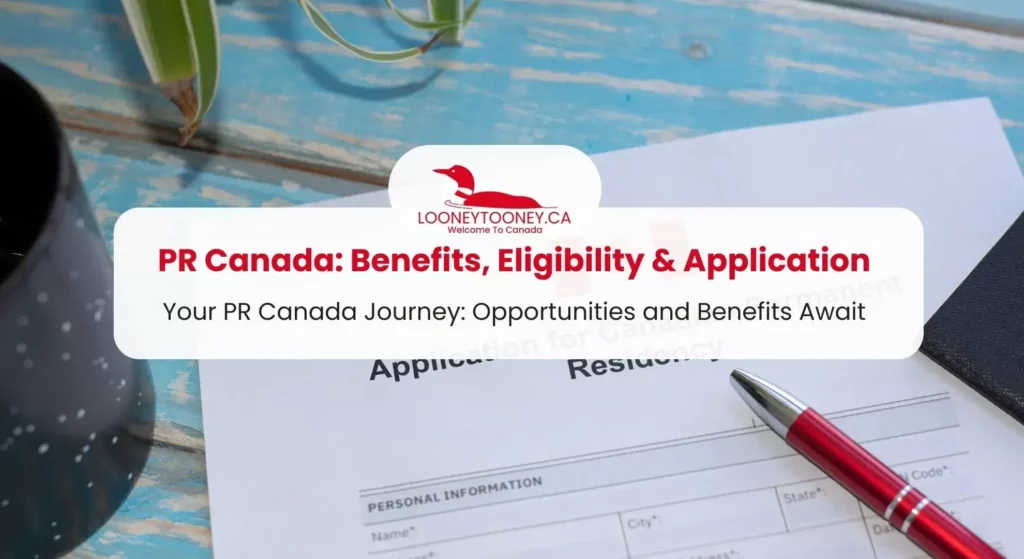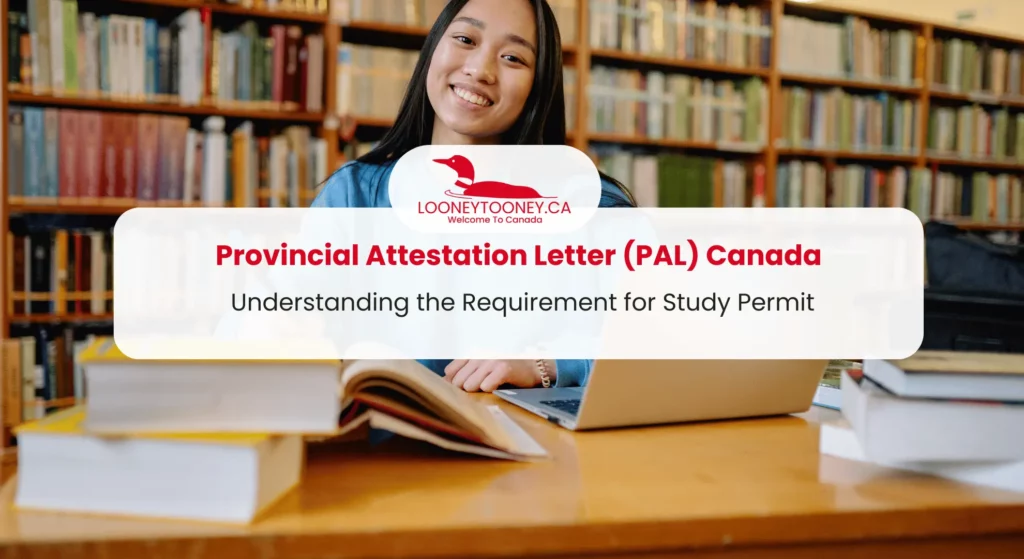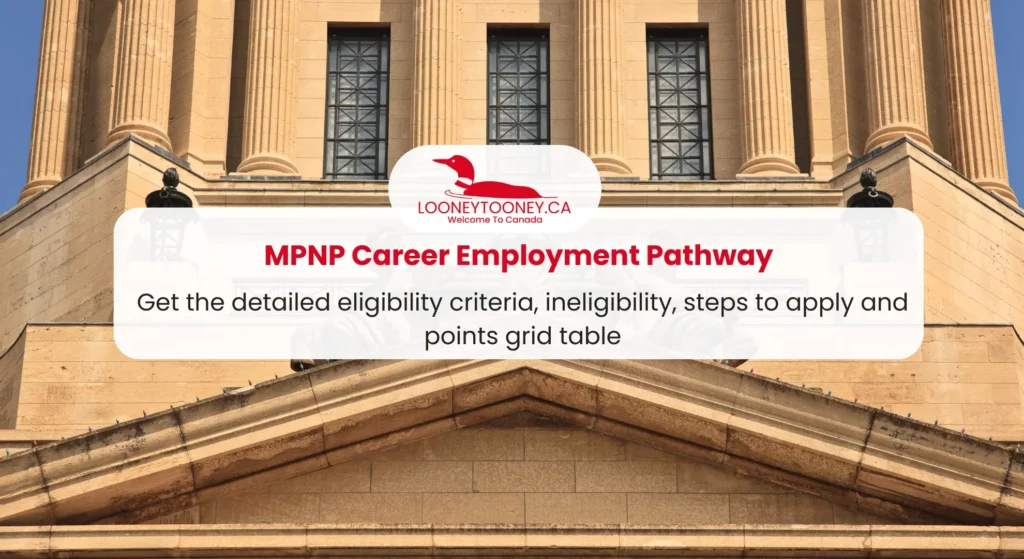If you have ever considered making Canada your permanent home, then you are on the cusp of an extraordinary journey towards becoming a Permanent Resident of Canada, or PR Canada. This journey isn’t just about acquiring a status; it’s about joining a nation where adventure meets security, where every season brings new wonders, and where the Canadian dream becomes your reality.
As we set forth on this journey together, you will delve into the eligibility criteria, master the intricacies of the application process, and uncover the rights and responsibilities that accompany the coveted PR Canada status. If you find yourself drawn to the Rockies’ majesty, the lively streets of Montreal, or the peaceful lakes of Ontario, our journey to PR Canada promises to be an enriching and truly transformative experience.
Permanent Resident of Canada
A permanent resident of Canada is an individual who has been granted permanent resident status by immigrating to Canada, while not holding Canadian citizenship. Permanent residents are citizens of other countries. To maintain their status, permanent residents must carry and present their valid PR card or permanent resident travel document (PRTD) when traveling to Canada via any commercial carrier. Failure to do so may result in being unable to board transportation to Canada.
It is the responsibility of PR of Canada to ensure the continued validity of their PR card and apply for a new one when it expires. Importantly, the expiration of the PR card does not mean the loss of permanent resident status. Temporary residents in Canada, such as students or foreign workers, are not considered permanent residents.
Refugees and Permanent Residency
Refugees who are resettled from overseas can become PR of Canada through either the Government-Assisted Refugee Program or the Private Sponsorship of Refugees Program.
Making a refugee claim within Canada does not automatically grant permanent resident status. It requires approval by the Immigration and Refugee Board and subsequent application for and get permanent resident status.
Permanent Resident Card
Upon obtaining Canadian permanent resident status, individuals become eligible to apply for a Canadian permanent resident card (PR card). This essential card serves as proof of one’s PR status in Canada and facilitates travel to and from the country.
Traveling with a PR Card
Your PR card can be used to demonstrate your permanent resident status in Canada. When traveling outside Canada, it is necessary to present your PR card along with your passport when returning via commercial means, such as airplanes, boats, trains, or buses.
Renewing Your PR Card
Most PR cards are valid for five years, although some may have a one-year validity. To ensure continuous validity, the Canadian government advises permanent residents to keep track of their card’s expiration date and apply for the renewal of their Canadian permanent resident card within six months of its expiry. This proactive approach helps in maintaining your PR status without interruption.
Benefits of PR Canada Status
Obtaining Canadian permanent resident status offers numerous advantages that significantly improve the quality of life for individuals and their families. Here, we highlight some key benefits:
1. Geographic Flexibility
PR of Canada enjoy the freedom to live and work anywhere within the country. They are not bound to a specific employer or province. Whether they start in Vancouver and discover a better job opportunity in Toronto, they have the right to make the move. Additionally, they can travel in and out of Canada using their Canadian permanent resident card or permanent resident travel documents (PRTD).
2. Universal Healthcare and Social Services Access
Canada’s healthcare system is universal, providing free medical care. Upon attaining permanent resident status, individuals gain access to Canada’s healthcare and social services.
3. Family Sponsorship
PR of Canada has the opportunity to sponsor their spouse, common-law partner, and dependent children to join them in Canada. Express Entry applicants can even include their family members in their initial application, eliminating the need for later sponsorship.
4. Educational Benefits for Children
Children of Canadian permanent residents receive free education up to the secondary school level. Beyond that, post-secondary education is considerably more affordable for permanent residents compared to international students.
5. Pathway to Canadian Citizenship
Acquiring permanent resident status serves as the initial step toward Canadian citizenship. After residing in Canada for three out of five years, permanent residents become eligible to apply for Canadian citizenship. This transition grants them the right to vote, apply for a Canadian passport, and eliminate the need for status renewal within the country.
6. Legal Protections
The rights of Canadian permanent residents are safeguarded by Canadian law and the Canadian Charter of Rights and Freedoms, ensuring equal protection under the law.
PR Canada Eligibility Criteria
To maintain permanent resident status in Canada, individuals must adhere to a residency obligation, which pertains to their physical presence within the country for a specified duration.
Meeting the following criteria significantly enhances an individual’s eligibility for PR Canada:
| Age | Individuals between the ages of 18 and 35 get the most preferred and maximum points |
| Education | Educational requirements should be equivalent to at least a high school education in Canada or higher |
| Work experience | Completed a minimum of one year of full-time work experience with an organization |
| Language ability | A minimum score of 6 bands on the International English Language Testing System (IELTS) is required |
| Adaptability | Applicants for Canada PR can receive an additional 10 points if they have a common-law partner or spouse included in their application |
| Arranged employment | An individual can earn an extra 10 points if they secure a job offer from a Canadian employer |
Meeting these criteria greatly enhances an individual’s eligibility for PR Canada, positioning them well to enjoy the privileges and opportunities that come with this status.
How to Apply for PR Canada?
Here is a step-by-step overview of the general PR Canada application process, along with an introduction to various immigration programs that offer specific pathways to permanent residency.
Step 1: Determine Your Eligibility
Before beginning your journey to PR in Canada, assessing your eligibility is crucial. Canada offers multiple immigration programs tailored to various qualifications and circumstances. Some of these programs include:
1. Express Entry
Express Entry stands out as a popular choice among skilled individuals due to its simplicity and expedited processing timelines. It consists of three immigration streams:
- Federal Skilled Worker (FSW) Program: Designed for applicants with significant foreign work experience and/or a high level of education.
- Federal Skilled Trades Program (FSTP): Ideal for skilled tradespeople.
- Canadian Experience Class (CEC): Suited for foreign nationals who have worked in Canada for at least one year.
2. Provincial Nominee Programs (PNP)
Each province and territory in Canada offers its own PNP streams, each with unique requirements. These programs are aimed at individuals with skills, education, and work experience tailored to the specific needs of the province or territory.
3. Atlantic Immigration Program (AIP)
The AIP offers a pathway to PR for skilled foreign workers and international graduates who aspire to live and work in Canada’s Atlantic provinces: Newfoundland and Labrador, Prince Edward Island, Nova Scotia, and New Brunswick.
4. Start-up Visa (SUV)
Entrepreneurs with innovative business ideas can apply for the Start-up Visa, provided they meet specific criteria, including having a qualifying business and securing a letter of support from a designated organization.
5. Rural and Northern Immigration Pilot (RNIP)
The RNIP aims to spread economic benefits to smaller communities. To apply, you must meet IRCC eligibility requirements and specific community requirements while holding an eligible job offer in one of the participating communities.
6. Family Sponsorship
Family sponsorship offers a pathway for spouses, partners, children, parents, grandparents, and, in specific instances, additional family members to reside, work, and pursue education in Canada as permanent residents.
7. Quebec-selected Skilled Workers
The Quebec-selected Skilled Workers program is for skilled workers aiming to become permanent residents in Quebec. Quebec has a special immigration agreement with Canada, involving two stages:
- Apply to Quebec for a Quebec Selection Certificate (CSQ).
– Quebec assesses your application.
– CSQ confirms Quebec’s approval. - Once Quebec selects you and issues a CSQ, you can apply for permanent residency (PR) with IRCC (Immigration, Refugees, and Citizenship Canada).
8. Caregivers
Caregivers have options to apply for PR through programs like the Home Child Care Provider Pilot, Home Support Worker Pilot, and Live-in Caregiver Program (LCP). The eligibility and application process vary based on work experience.
9. Self-employed
The Self-employed Persons Program offers a pathway for individuals with relevant experience in cultural activities or athletics to attain permanent immigration status in Canada as self-employed individuals. To qualify under this program, you must demonstrate your readiness and capability to make a substantial impact on Canada’s cultural or athletic landscape.
10. Agri-Food Pilot
The Agri-Food Pilot program targets experienced, non-seasonal workers in specific agri-food industries and occupations, providing a path to PR.
To be eligible for this program, your primary requirements include having relevant Canadian work experience in one or more of the qualifying industries and occupations, as well as securing a full-time, non-seasonal job offer from a Canadian employer in one of these industries or occupations (excluding Quebec).
Step 2: Gather Required Documents
Irrespective of the immigration program you select, you will need to collect essential documents, including:
- Passport
- Language proficiency test results (e.g., IELTS or TEF)
- Educational credential assessment (if required)
- Proof of funds
- Police clearance certificates
- Medical examination results
Ensure that all documents comply with the specific program requirements.
Step 3: Create an Online Profile
For most programs, you will be required to establish an online profile with the Canadian government. Express Entry, for instance, necessitates candidates to outline their skills, work experience, education, and more.
Step 4: Receive an Invitation to Apply
Candidates eligible for their chosen program may receive an ITA, enabling them to proceed with the PR application.
Step 5: Submit Your PR Application
Upon receiving an ITA, submit your PR application online, ensuring that all forms are meticulously completed and all requisite documents are included.
Step 6: Biometrics and Medical Examination
Candidates may be asked to complete biometrics and undergo a medical examination to meet Canada’s health standards.
Step 7: Wait for Processing
The processing time varies depending on the program and application volume. Be patient during this period.
Step 8: Participation in an Interview or Submission of Additional Information
In some cases, an interview or additional documentation may be requested to assess your application further.
Step 9: Receive Confirmation of PR
Upon approval, you will receive a Confirmation of Permanent Residence (COPR) and a Permanent Resident Visa (PRV) if applicable.
Step 10: Settle in Canada
After arriving in Canada, fulfill any post-landing requirements, such as obtaining a PR card or registering for provincial healthcare.
By following these steps and checking out the different immigration programs, you can smoothly apply for PR Canada and start a new chapter in this welcoming country.
Note: Make sure to verify the latest requirements and guidelines on the official website of Immigration, Refugees, and Citizenship Canada, as they may change over time. Consulting with an immigration professional can provide personalized guidance based on your unique situation.
Rights as a Canadian PR
Upon attaining Canadian permanent residency, you gain access to a range of rights and privileges within the country, including:
- Freedom of Movement: You have the liberty to travel and reside anywhere within Canada without constraints.
- Access to Social Benefits: This encompasses publicly funded healthcare in your province, free public education for your children, and more.
- Financial and Tax Benefits: Eligible permanent residents can benefit from various financial incentives and tax credits, including programs such as Old Age Security (OAS), Canadian Pension Plan/Quebec Pension Plan (based on your employment status), Canada Child Benefit (CCB), and others.
- Property Ownership: You have the right to purchase property in Canada, though it’s worth noting that, effective January 1, 2023, the federal government imposed a two-year ban on property purchases by non-residents and temporary residents (with certain exceptions).
- Employment Opportunities: As a permanent resident, you are free to work for any employer in Canada, provided you follow the employer’s recruitment process and secure a job offer. Notably, Canadian employers do not require a Labour Market Impact Assessment (LMIA) to hire permanent residents.
- Educational Pursuits: You can pursue higher education at any Canadian university or college, subject to each institution’s eligibility criteria. Acceptance into a study program and payment of domestic tuition fees are typically required, but these fees are often substantially lower than what international students pay.
- Path to Canadian Citizenship: After meeting the physical residency and other requirements, you have the opportunity to qualify for Canadian citizenship.
- Legal Rights and Protections: You enjoy the protection of Canadian law and the rights outlined in the Canadian Charter of Rights and Freedoms.
Responsibilities as a PR Canada
Canadian permanent residency also entails certain responsibilities, which include:
- Tax Compliance: You are responsible for paying income tax and other indirect taxes, such as Goods and Services Tax (GST) and Harmonized Sales Tax (HST).
- Legal Compliance: Respecting all provincial, federal, and municipal laws within Canada.
- Maintenance of PR Status: To maintain your permanent resident status, you must be physically present in Canada for at least 730 days during the five-year validity period of your PR card.
Restrictions for Permanent Residents in Canada
Certain limitations pertain to permanent residents in Canada. These are privileges exclusive to Canadian citizens and not extended to permanent residents. These restrictions include:
- Voting Restrictions: Permanent residents are ineligible to vote in federal, provincial, or municipal elections.
- Ineligibility for Political Office: Permanent residents are not qualified to run for political office within Canada.
- Passport Ineligibility: They are not eligible to obtain a Canadian passport.
- Exclusion from High-Level Security Jobs: Permanent residents do not qualify for positions that mandate high-level security clearance.
- Exemption from Jury Duty: Permanent residents are exempt from being called for jury duty.
How to Maintain Your Permanent Residence Status in Canada?
Unlike citizenship, being a permanent resident in Canada requires you to take certain steps to maintain your status. To ensure the continuity of your PR status, you must accumulate a minimum of 730 days (equivalent to two years) of physical presence within Canada during the most recent five-year period. It’s important to note that these 730 days need not be consecutive.
Additionally, certain situations may allow time spent outside Canada to contribute to meeting the physical residency requirement for maintaining your PR Canada status. These situations include:
- Employment Abroad: If you were employed full-time abroad by a Canadian organization or government.
- Accompanying a Canadian Citizen or PR: If you traveled abroad alongside your spouse or partner who is either a Canadian citizen or a permanent resident working full-time for a Canadian company or government.
- Dependent Child Travel: If you are a dependent child accompanying a parent who is either a Canadian citizen or a PR engaged in full-time employment abroad for a Canadian company or government.
Losing Your Status as a Permanent Resident
Your permanent resident status does not automatically expire when your PR Canada card does. It can only be revoked through an official process.
You may lose your PR status if:
- An adjudicator, following an inquiry or PRTD appeal, determines that you are no longer a permanent resident.
- You willingly renounce your permanent resident status.
- A removal order is issued against you and becomes effective.
- You become a Canadian citizen.
Your PR Canada status stays the same until a formal decision is made, even if you don’t meet the residency obligation.
Voluntarily Relinquishing Permanent Resident Status
The process of losing your permanent resident status is not automatic. There might come a point when you no longer wish to maintain your status as a permanent resident in Canada. In such cases, you have the option to apply to voluntarily surrender (renounce) your permanent resident status.
For instance, if you:
- Recognize that you haven’t fulfilled your residency obligations due to extended periods outside of Canada.
- Desire to visit Canada.
- Prefer not to wait for a visa officer to formally assess your permanent resident status. (or)
- Wish to avoid delays during the entry process at the Port of Entry.
It’s important to note that you may not be permitted to enter Canada until your permanent resident status is resolved, either by obtaining a permanent resident travel document or by voluntarily renouncing your permanent resident status.
Canadian Citizenship
Many Canadian permanent residents who have weathered the immigration process look forward to being granted citizenship and are eager for the day they can be sworn in as official Canadian citizens.
Canadian citizenship is the legal status that grants individuals certain rights and privileges in Canada. It signifies that a person is a full member of the Canadian community and has certain responsibilities, such as obeying Canadian laws and participating in the democratic process. Some of the key benefits of Canadian citizenship include the right to vote in federal, provincial, and territorial elections, eligibility for a Canadian passport, access to social benefits, and protection under Canadian law.
Becoming a Canadian citizen typically involves meeting certain residency and language requirements, passing a citizenship test on Canadian history, values, institutions, and symbols, and taking an oath of citizenship. Keep in mind that the process and requirements for obtaining Canadian citizenship may change over time, so it’s essential to check with the official government website or consult with immigration authorities for the most up-to-date information.
Conclusion: Your Path to PR Canada
In conclusion, obtaining a Permanent Residency in Canada is a transformative journey that opens doors to a wealth of opportunities and benefits. From the freedom to live and work anywhere in this diverse and beautiful nation to access to world-class healthcare and education, PR Canada offers a quality of life that many aspire to attain.
However, it’s essential to understand the eligibility criteria, diligently follow the application process, and fulfill your responsibilities as a permanent resident to maintain this valuable status. Whether you dream of becoming a Canadian citizen or simply wish to call Canada your home away from home, PR Canada is the first step on an enriching and fulfilling path.
Explore related articles for further insights:
- How To Get Work Permit for Students in Canada?
- Flagpoling in Canada: Check Legal Process & Benefits
- How to Find Job in Canada as a New Immigrant?
- Latest Express Entry Draw 2023
- Can I Move to Another Province After PNP?
- A Comprehensive Guide on Different Types of Visas in Canada
We trust that this article has been a valuable resource in your journey towards understanding PR Canada. To stay updated with the latest information on PNP, Express Entry, RNIP, AIP, and more, we invite you to stay tuned to LooneyTooney.ca. Your pursuit of Canadian permanent residency is a journey filled with potential, and we are here to offer you the guidance and insights you need every step of the way.





